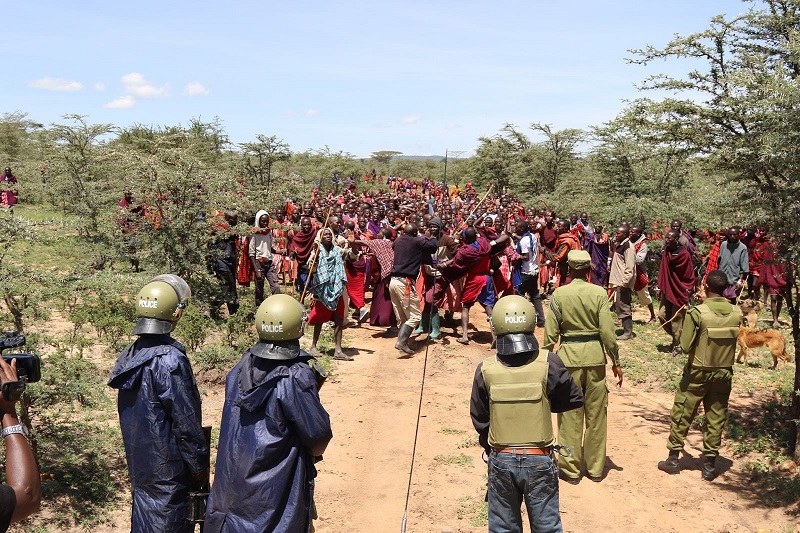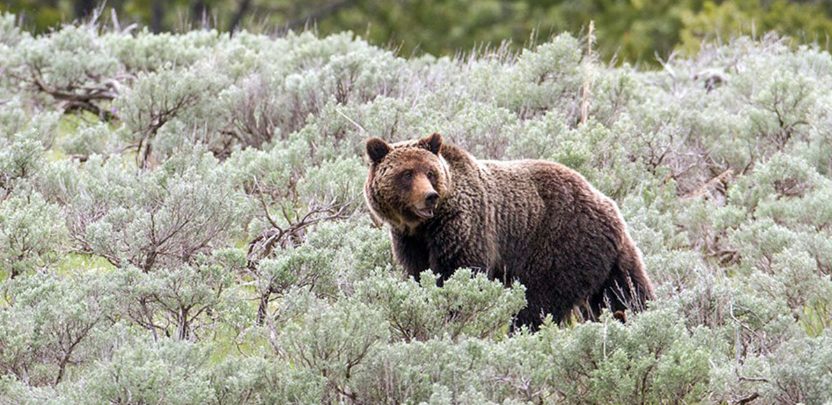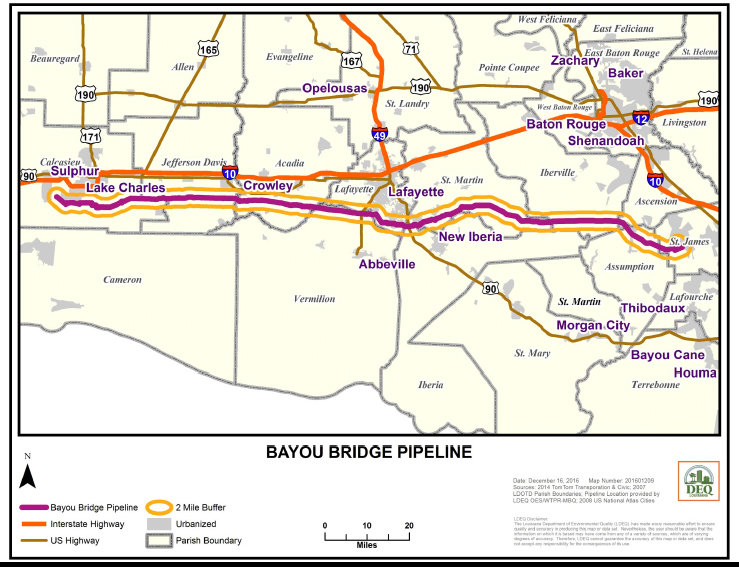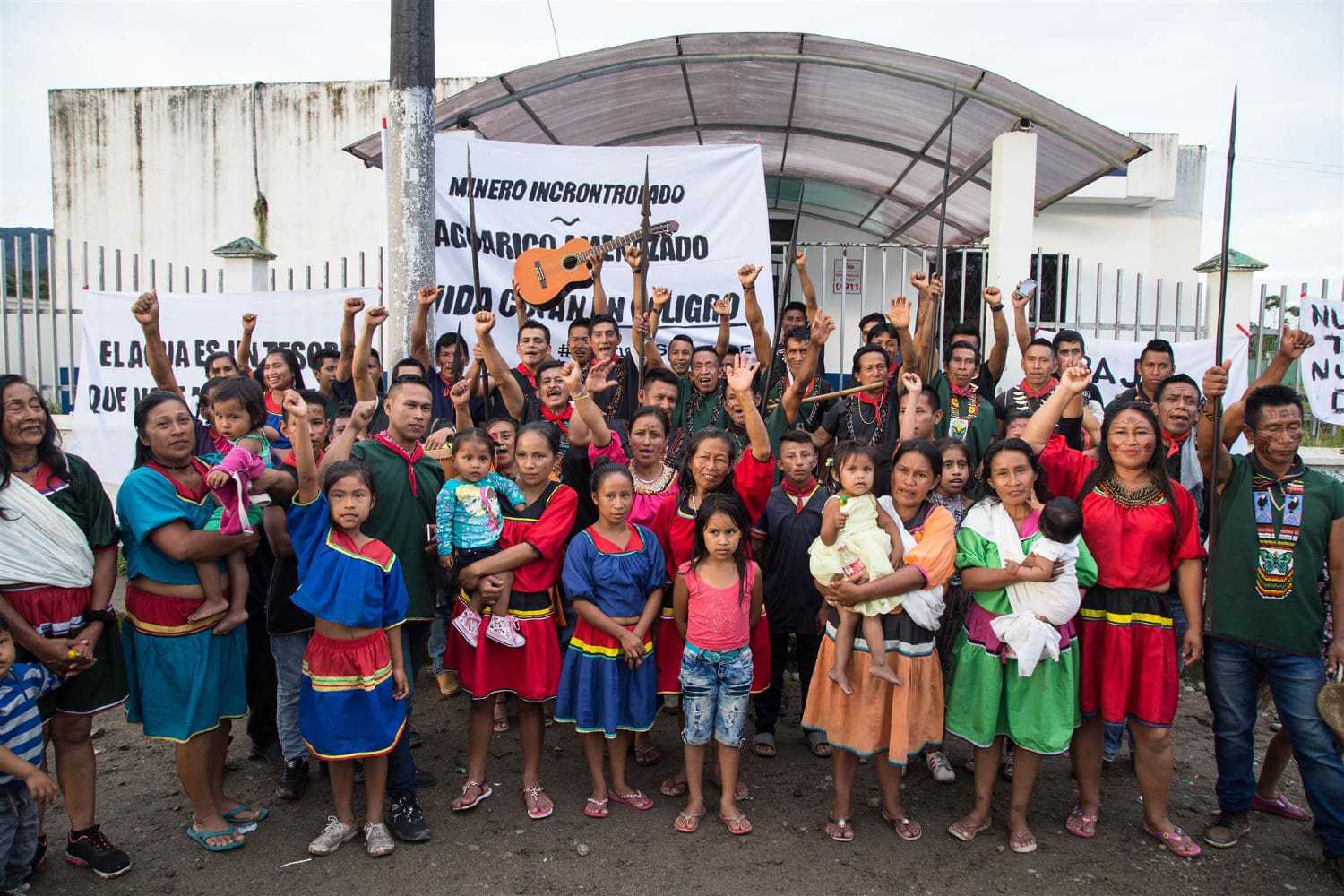
by Deep Green Resistance News Service | Nov 5, 2018 | Protests & Symbolic Acts
by Honduras Solidarity Network
On October 12, 2018, hundreds of women, men, children, youth and the elderly decided to leave Honduras as a desperate response to survive. The massive exodus that began in the city of San Pedro Sula, reached more than 3 thousand people by the time the group crossed to Guatemala. The caravan, which is headed north to Mexico first, and to the United States as the goal- is the only alternative this people have to reach a bit of the dignity that has been taken from them. They are not alone in their journey. Various waves of Hondurans, whose numbers increase every hour, are being contained by Honduran security forces on their border with El Salvador and Guatemala.
The Honduras Solidarity Network in North America condemns any threats and acts of repression against the refugee caravan, human rights activists and journalists that accompany their journey. The conditions of violence, marginalization and exploitation in which this refugee crisis find its origins, have been created, maintained and reproduced by US-backed social, economic and military interventionist policies, with the support of its Canadian and regional allies. We call on people in the US to reject the criminalization, prosecution, detention, deportation and family separation that threaten the members of this march and the lives of all those refugees forced from their homes in the same way. We urge a change of US policy in Honduras and to cut off security aid to stop human rights abuses and government violence against Hondurans.
This refugee crisis has been exacerbated by the governments of Guatemala and Mexico, who subservient to Donald Trump’s administration, have chosen the path of repression. Bartolo Fuentes, a Honduran journalist and spokesperson for the refugees, has been detained in Guatemala. Meanwhile the Mexican government has sent two planeloads of its National Police to the border with Guatemala. Irineo Mujica, a migrant rights activist and photojournalist, was arrested in Chiapas by agents of the Mexican National Institute of Migration when he was getting ready to support the Honduran migrant march. Today (Friday) in the afternoon, tear gas was fired into the group as they tried to come into Mexico on the border bridge. Honduran human rights organizations report that a 7 month old baby was killed.
The massive forced flight of people from Honduras is not new; it is the legacy of US intervention in the country. Since the 2009 US-backed coup in Honduras, the post-coup regime has perpetuated a system based on disregard for human rights, impunity, corruption, repression and the influence of organized crime groups in the government and in the economic power elite. Since the coup, we have seen the destruction of public education and health services through privatization. The imposition of mining, hydro-electric mega-projects and the concentration of land in agro-industry has plunged 66 percent of the Honduran population into poverty and extreme poverty. In the last 9 years, we have witnessed how the murder of Berta Cáceres and many other activists, indigenous leaders, lawyers, journalists, LGBTQ community members and students has triggered a humanitarian crisis. This crisis is reflected in the internal displacement and the unprecedented exodus of the Honduran people that has caught the public’s eye during recent days.
The fraudulent November 2017 elections, in which Juan Orlando Hernández -president since questionable elections in 2013- was re-elected for a second term in violation of the Honduran constitution, sparked a national outrage. The people’s outrage was confronted by an extremely violent government campaign with military and US-trained security forces to suppress the protests against the fraud. The result of the repression was more than 30 people killed by government forces, more than a thousand arrested and there are currently 20 political prisoners being held in pre-trial prison.
To the repression, intimidation and criminalization faced by the members of the refugee caravan, we respond with a call for solidarity from all the corners of the world. In the face of the violence that has led to the mass exodus of hundreds of thousands of Hondurans, we demand an end to US military and security aid to Juan Orlando’s regime, not as the blackmail tool used by Donald Trump, but as a way to guarantee the protection of the human rights of the Honduran people. We demand justice for Berta Cáceres, for all the victims of political violence as a consequence of the post coup regime, and the approval of the Berta Cáceres Human Rights in Honduras Act H.R. 1299. We demand freedom for all the political prisoners in Honduras. We demand the US end the criminalization, imprisonment, separation, deportation and killing of migrants and refugees.
Today we fight so that every step, from Honduras to the north of the Americas, is dignified and free
Honduras Solidarity Network of North America

by Deep Green Resistance News Service | Oct 10, 2018 | Protests & Symbolic Acts
by Max Wilbert / Deep Green Resistance
Last week, I was invited to join a Sacred Water Run-Walk in Nevada by Chief Johnnie Bobb of the Western Shoshone National Council. Chief Bobb attended the Sacred Water, Sacred Forests gathering back in May, and we exchanged contact information.

I decided to attend last minute after his phone call, and gathered my supplies and energies. It is a 14 hour drive from my home in Oregon to the area the walk was to take place, so I took two days to make the drive. I stopped along the way and purchased as much food and supplies as I could afford, although I didn’t know exactly what was needed.

I slept on the night of October 1st in my car at the Swamp Cedars, where we were supposed to meet. The Swamp Cedars are an ecologically unique stand of Rocky Mountain Junipers on the bottom of Spring Valley. Pure water coming out of the ground, shade from the trees, and rich grasses that brought in game animals made this area a gathering place for Newé (Western Shoshone/Goshute) people for thousands of years. It is also why the people were gathered here when they were massacred by the U.S. Calvary, one of several massacres here.
I was awoken before the dawn the next morning when Rupert Steele, the chairman of the Confederated Tribes of the Goshute Reservation, pulled in next to me. We spoke for a while, and then others started to arrive. The others included about 15 or 20 other people from 12 different indigenous nations.
Mr. Steele and Chief Johnnie Bobb both said prayers and burned sage as the sun rose over Spring Valley. I introduced myself to various people, including the woman who organized the run (Beverly Harry). I told her about the food, which she was happy about. Then the runners started out. I stuck around for a while and made some coffee for the elders. One of them asked me to join them in the run-walk, a great honor. I ended up doing 10 miles that day. We did it relay style, so at least one person from the group ran or walked every mile.
We covered 100 miles that first day, then stayed at Cathedral Gorge State Park. We had a nice night around the fire and got to know each other a bit better. I was able to stay through the second day. We covered another 75 miles the second day, and then I had to leave. The runners continued down to the Moapa Paiute reservation.
Our network against the water grab is growing. There were some solid people there. In the event SNWA begins to build the pipeline, there will be serious resistance.


by Deep Green Resistance News Service | Oct 7, 2018 | Lobbying
Featured image: an eviction of Maasai in Loliondo. Photo: tourismobserver.com
by Oakland Institute
Oakland, CA—On September 25, 2018, the East African Court of Justice (EACJ) awarded a major victory to four Maasai villages fighting for their rights to their land in northern Tanzania. The case revolves around violent government-led evictions of Maasai villagers in Loliondo – which included burning their homes, arbitrary arrest, forced eviction from their villages, and confiscating their livestock – that took place in August 2017, as well as the ongoing harassment and arrest of villagers involved in the case by the Tanzanian police. The four villages named in the case are legally registered owners of their land.
The Court’s ruling grants an injunction that prohibits the Tanzanian government from evicting the Maasai communities from a vital 1,500km2 parcel of land. Furthermore, it prohibits the destruction of Maasai homesteads and the confiscation of livestock on said land, and bans the office of the Inspector General of Police from harassing and intimidating the plaintiffs, pending the full determination of their case. The injunction remains in effect until a ruling on the full case concerning the August 2017 evictions can be heard.
“IN THE RESULT, HAVING HELD AS WE HAVE IN THIS RULING ABOVE, WE DO HEREBY ALLOW THE SUBSISTING APPLICATION WITH THE FOLLOWING ORDERS:
A. AN INTERIM ORDER DOTH ISSUE RESTRAINING THE RESPONDENT, AND ANY PERSONS OR OFFICES ACTING ON HIS BEHALF, FROM EVICTING THE APPLICANTS’ RESIDENTS FROM THE DISPUTED LAND, BEING THE LAND COMPRISED IN THE 1,500 SQ KM OF LAND IN THE WILDLIFE CONSERVATION AREA BORDERING SERENGETI NATIONAL PARK; DESTROYING THEIR HOMESTEADS OR CONFISCATING THEIR LIVESTOCK ON THAT LAND, UNTIL THE DETERMINATION OF REFERENCE NO. 10 OF 2017.
B. AN INTERIM ORDER DOTH ISSUE AGAINST THE RESPONDENT, RESTRAINING THE OFFICE OF THE INSPECTOR GENERAL OF POLICE FROM HARASSING OR INTIMIDATING THE APPLICANTS IN RELATION TO REFERENCE NO. 10 OF 2017 PENDING THE DETERMINATION THEREOF.
C. THE COSTS HEREOF SHALL ABIDE THE OUTCOME OF THE REFERENCE. WE DIRECT THAT IT BE FIXED FOR HEARING FORTHWITH.”
In their ruling, Justices Monica K. Mugenyi, Faustin Ntezilyayo, and Fakihi A. Jundu noted that the interim order and corresponding affidavit filed by the Maasai “paint[ed] a picture of widespread social upheaval in Ololosokwan village and an attempt to stifle village representatives’ and/or the affected persons’ access to justice.” They further ruled that the government’s argument that the evictions were in service of the protection of the local ecosystem “pales in the face of the social disruption and human suffering that would inevitably flow from the continued eviction of the Applicants’ residents.”
The Oakland Institute’s research has exposed internationally the ongoing plight and human rights violations of the Maasai villagers as their land rights are denied in the name of conservation and to the benefit of safari companies, such as Boston-based Thomson Safaris and the UAE-based Ortello Business Corporation, which runs hunting excursions for the Emirati royal family.
“The Court’s decision is a major win for the communities of Ololosokwan, Oloirien, Kirtalo, and Arash, particularly in light of the ongoing harassment and intimidation by the police and the recent wrongful arrests of local secondary school teacher Clinton Kairung and Belgian citizen Ingrid de Draeve, who was mistaken for a Swedish blogger who has written extensively on the issues facing the Maasai in the region,” said Anuradha Mittal, Executive Director of the Oakland Institute.
“It is now vital for both the East African Court and the international community to ensure that the Tanzanian government abides by this ruling and immediately halts the harassment, intimidation, and violence it has waged against the villages involved in this case as well as the broader Maasai community in Loliondo. It is time for the Tanzanian government to stop colluding with game parks and safari companies and finally recognize the land rights of its Maasai population as well as their longstanding role as environmental stewards of the land,” she continued.
###
For more information on this case and larger issues regarding the Maasai’s struggles for their land and livelihoods in the region, please see Losing the Serengeti: The Maasai Land that Was to Run Forever.

by Deep Green Resistance News Service | Sep 25, 2018 | Lobbying
Featured image: A grizzly bear in Yellowstone National Park. Jim Peaco / National Park Service
by Olivia Rosane / Ecowatch
A federal judge restored endangered species protections for grizzly bears in and around Yellowstone National Park on Monday, The Huffington Post reported, putting a permanent halt to plans by Wyoming and Idaho to launch the first Yellowstone-area grizzly hunt in four decades.
U.S. District Judge Dana Christensen had already placed a temporary restraining order on the hunts, which would have started Sept. 1 and allowed for the killing of up to 23 bears, while he considered the larger question of whether Endangered Species Act protections should be restored. The bears’ management will now return to the federal government.
Christensen wrote in his ruling that his decision was “not about the ethics of hunting.” Rather, he agreed with environmental and tribal groups that the Fish and Wildlife Service (FWS) had not considered the genetic health of other lower-48 grizzly populations when it delisted the Yellowstone area bears in 2017.
“By delisting the Greater Yellowstone grizzly without analyzing how delisting would affect the remaining members of the lower-48 grizzly designation, the Service failed to consider how reduced protections in the Greater Yellowstone Ecosystem would impact the other grizzly populations,” Christensen wrote, according to The Huffington Post. “Thus, the Service ‘entirely failed to consider an important aspect of the problem.'”
Bear advocates said the Yellowstone population was growing large enough to merge with other populations, which would be a win-win for the genetic diversity of all bears involved.
“The Service appropriately recognized that the population’s genetic health is a significant factor demanding consideration,” Christensen wrote. “However, it misread the scientific studies it relied upon, failing to recognize that all evidence suggests that the long-term viability of the Greater Yellowstone grizzly is far less certain absent new genetic material.”
Native American and environmental groups applauded the decision.
“We have a responsibility to speak for the bears, who cannot speak for themselves,” Northern Cheyenne Nation President Lawrence Killsback said in a statement Monday reported by The Huffington Post. “Today we celebrate this victory and will continue to advocate on behalf of the Yellowstone grizzly bears until the population is recovered, including within the Tribe’s ancestral homeland in Montana and other states.”
The FWS told The Washington Post it was reviewing the ruling.
“We stand behind our finding that the Greater Yellowstone Ecosystem grizzly bear is biologically recovered and no longer requires protection. . . . Our determination was based on our rigorous interpretation of the law and is supported by the best available science and a comprehensive conservation strategy developed with our federal, state, and tribal partners,” the FWS told The Washington Post.
The FWS first attempted to delist the bears in 2007, but that move was also blocked in federal court over concerns that one of the bears’ food sources, whitebark pine seeds, were threatened by climate change.
In its 2017 ruling, the FWS said that it had reviewed the case and found the decline of the whitebark pine seeds did not pose a major threat.
Grizzlies in the lower 48 states were first listed as endangered in 1975, when their historic range had been reduced by 98 percent.
The Yellowstone grizzlies numbered fewer than 140 at the time. The population has since rebounded to about 700, according to The Washington Post.

by Deep Green Resistance News Service | Sep 19, 2018 | Protests & Symbolic Acts
In Solidarity with #NoBayouBridgePipeline National Day of Action
by Ginew
BEMIDJI, Minnesota—Early Tuesday morning, September 18th, a group of indigenous water protectors from the Ginew Collective, raised a tipi and blocked a bridge south of Bemidji, halting work at a construction site for the recently permitted line 3 pipeline. Ginew (Golden Eagle) is a grassroots, frontlines effort led by indigenous women to protect Anishinaabe territory from the destruction of Enbridge’s Line 3 tar sands project.
While the tipi blockade prevented bulldozers and street paving machines from laying down new asphalt over the Mississippi, a local Anishinaabe woman held a water ceremony on the bank of the river offering medicine, prayers and songs. The action took place just miles from 3000 year old Dakota village sites near Lake LaSalle where Clearwater county road 230 crosses the headwaters of the Mississippi River.
One member of Ginew declared “We’re here today protecting our water, our burial sites and standing in solidarity with our brothers and sisters down south who are fighting the Bayou Bridge Pipeline. The Mississippi River begins here in the headwaters, where we are standing right now, and it ends in the Gulf of Mexico, in the bayous, where folks have been fighting against Energy Transfer Partners (ETP) for months, putting their bodies on the line for clean water and safer communities. We’re fighting Enbridge here, a different company that is also invested in ETP. Enbridge wants to cross over 200 water ways and drill under the Mississippi River multiple times to construct Line 3. Enbridge wants to put this new poisonous black snake where the river begins and turn this area into an industrial corridor. They want to poison our seed of hope for clean water and turn us into another alley of cancer.”
Many of the work trucks bore out of state plates, one indigenous woman pointed to the out of state plates and explained that “Extractive industry impacts indigenous peoples first and worst – the men come into our communities to build these destructive projects and we women face increased risks of violence, harassment, and potentially life-threatening assaults while our native communities are jurisdictionally limited in the right to prosecute offenders.”
Another water protector put it simply. “We will make it clear that indigenous territories are not sacrifice zones, and the tar sands machine must stop. Line 3 is Enbridge’s single largest project in the company’s history, and with the cancellation of Energy East and uncertain financial backing of Kinder Morgan and Keystone XL, this has become a fight that could cripple the industry while changing the narrative of indigenous peoples within mainstream society. Standing Rock planted seeds across Turtle Island and the world, we Anishinaabe in what is now known as Minnesota are prepared to fight and to stand side by side with indigenous and non-indigenous peoples alike in our work.”

by Deep Green Resistance News Service | Sep 1, 2018 | Lobbying
Featured image: The community of Sinangoe gathered in front of the courtroom in Lumbaqui (Succumbíos) on July 27th 2018.
by Nicolas Mainville, Amazon Frontlines / Intercontinental Cry
In a lawsuit that will inspire and galvanize many other indigenous communities across the Amazon for years to come, the Kofan of Sinangoe have won a trial against four Ecuadorian ministries and agencies for having granted or attempted to grant more than 30,000 hectares of mining concessions in pristine Amazonian rainforest on the border of their ancestral land without their free, prior and informed consent. The destructive mining operations that were taking place within these concessions threatened not only the Kofan’s lives, culture and health, but also those of the countless communities located downriver.
In a historic decision on Friday July 27th 2018, a regional judge accepted the evidence provided by the community, charged the government with not having consulted the Kofan, and suspended all mining activity in more than 52 concessions in the headwaters of the Aguarico River. The decision was immediately appealed by all the authorities involved, and then by Sinangoe and their ally in the Defensoria del Pueblo, who seek an even tougher verdict recognizing that rights to health, water and a clean environment had also been violated. The case will be brought before a provincial judge in August, 2018.
The free, prior and informed consent loophole
Like in many places around the world, the Ecuadorian government has a mining claim system built to facilitate any interested party in purchasing cheap concessions— maximizing foreign interests and accelerating the approval process. Although both Ecuador’s Mining Act and the Constitution recognize the need for Free, Prior and Informed Consent from stakeholder communities for mining operations, it is still mostly a theoretical concept ignored by Ecuadorian agencies. Hence Sinangoe’s lawsuit. According to the experts heard over the course of the legal process, the Mining ministry leaves the “consultation” to the mining company or the concession owners themselves, which in turn have no legal obligation to consult with local people, and often will perform their “consultation” through a phone call or by handing out a simple information pamphlet. In the case of Sinangoe, it was when machines started tearing up the riverbed of the Aguarico looking for gold that the community learned about the new concessions.
The Environment ministry, on the other end, stipulated in the courtroom that it is not responsible for consulting with communities impacted by mining. Interestingly, according to the Mining Act, the Environment Ministry needs to grant environmental licenses before operations can begin, unless the granting process takes more than 6 months, in which case – as unbelievable as this is – the permits are automatically granted to the operators. So basically, via a very simple bureaucratic process involving nothing more than paperwork, a mining operator can very quickly obtain 20 to 25-year land claims within 6 months, while the impacted communities living downstream haven’t even heard about the concessions. This is a loophole the judge described as a violation of the right to free, prior and informed consent, a verdict that will help many other communities facing the same threats in a country where gold mining is booming.
When rigorous community monitoring pays off
Throughout the lawsuit, the ministries’ lawyers vigorously tried to destroy Sinangoe’s evidence, credibility, ownership of and ancestral claims to the land. They downplayed the environmental damage documented by Sinangoe, claiming that the Kofan aren’t impacted by the mining operations because their land is on the other side of the river and that legal mining has minimal footprint on the environment. However, Sinangoe had done what will likely inspire many other communities: they had documented every step made by the miners through rigorous and systematic monitoring using high tech mapping, filming, archiving all evidence, and then they used legal tactics to pressure every single level of government to act to stop the operations. Systematic recording of all the different types of evidence helped build a solid case against a negligent concession-granting system.
Once in the courtroom, Sinangoe had accrued such a massive body of evidence of environmental damage and inaction on the part of the government that the judge requested a field inspection, a key event that helped him understand the scale of the damage already done, showed the deep connection the Kofan have with the area transformed into mining concessions, discredited the ministries’ arguments, and also allowed him to witness the sheer beauty of the area at risk.

Evidence provided by Sinangoe in court to show the rapidity and expanse of environmental damages on the shores of the Aguarico River
A first legal victory, but the battle for land and rights still rages
To the officials sitting in their offices in Quito, these concessions were nothing more than coordinates and squares on a map, but to the Kofan who live across the riverbank, the area is a place imbued with life, history, sustenance, stories and so much more. To grant concessions without experiencing the place in and of itself, either through field visits or proper consultation with the people who inhabit and use the territory, is a transgression of the inherent value of sites so rich in history and biodiversity.
Sinangoe’s strength has been put to trial, and the community’s perseverance and conviction have provided them a first legal victory and attracted support from various indigenous and human rights organization across the country. With all ministries involved appealing the judgment, the Kofan will need more strength and support to navigate the next wave of legal governmental intimidation.

Alex Lucitante, Kofan human rights defender, engaging with the media after the historic legal victory.
Sign the pledge in support of Sinangoe and stay tuned for more on our work to defend rights, lands and life in the Amazon.












